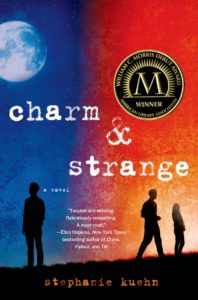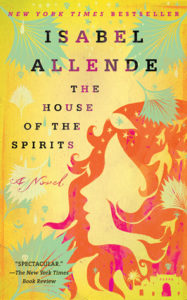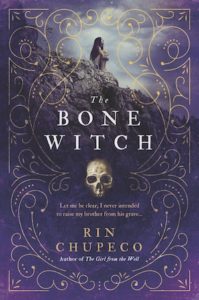Happy Monday-or-whenever-you’re-reading-this YA readers!
This week’s “What’s Up in YA?” is sponsored by Pin It from Chronicle Books.
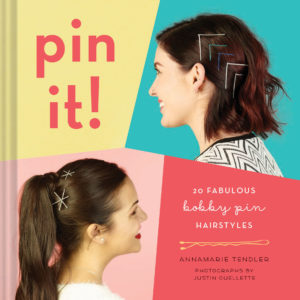 Brightly colored pins styled into fun patterns and designs are the hottest new hairstyling trend. Pin It! gives short- and long-haired fashionistas tips and tricks to create 20 colorful bobby pin hairstyles for any occasion. Step-by-step photos make it easy to follow along, and five DIY projects for personalizing bright and sparkly pins make the looks even more fun and unique.
Brightly colored pins styled into fun patterns and designs are the hottest new hairstyling trend. Pin It! gives short- and long-haired fashionistas tips and tricks to create 20 colorful bobby pin hairstyles for any occasion. Step-by-step photos make it easy to follow along, and five DIY projects for personalizing bright and sparkly pins make the looks even more fun and unique.
____________________
May is Mental Health Awareness Month. This annual awareness campaign has been around since 1949 (!) and seeks to educate Americans about mental health, signs of illness, and more.
Rather than share a whole host of YA books that explore mental illness, I wanted to take this issue of the newsletter to highlight some of the pieces others have written about YA and mental health. At the end, I’ll note some of the more recent titles that have explored mental health, as well. This is meant to be a robust, though not comprehensive, look at what’s out there for readers to better understand mental health and how it plays a big role in YA fiction.
One thing worth noting before going on: not all mental health angled YA books are going to be “good.” But it would be challenging to note which ones are “good” and which are “bad,” since mental illness itself manifests so differently for every single person. Suggesting there’s a single experience is dangerous, though there are absolutely places to tread lightly for those who might be triggered by raw or graphic depictions of illness. This is one reason, among many others, that bibliotherapy shouldn’t be practiced by anyone who isn’t also certified in psychiatry or other mental health focused related medical fields. The wrong book in the wrong hands could end up being far more dangerous than intended. What can be criticized more clearly and thoughtfully on the “good” or “bad” scale when it comes to mental health depiction, though, are the tropes that emerge with them. Tropes such as romance “curing” the mental illness of a character or tropes wherein the mental illness is simply a ruse can be quite dangerous not just for those who struggle with mental illness but for those who haven’t quite grasped how severe and debilitating mental illness can be. It’s not a mystery to be solved or a hole to be filled with love; mental health is a real, complex thing that requires real, compassionate consideration and care.
That said, let’s get to the resources for books, books, and more books.
- Disability in KidLit is one of my favorite resources out there, period. The work they’ve done in talking about mental illness is especially excellent, and you can access both a wealth of reviews of specific YA titles, as well as guest posts and discussions on various aspects of mental health here.
- There’s an excellent round-up of mental health focused YA from YA Highway, organized by disorder represented. Stephanie Kuehn, a YA author herself, compiled the list in 2014 and it remains one of the best out there.
- Patrice Caldwell wrote a fabulous piece in late 2016 about the representation of mental illness for teens of color over on STACKED (my personal book blog). Not only does she talk about what she’s seen and not seen, but she highlights some of the excellent POC-focused mental health titles in YA.
- s.e. smith talked about mental health representation in YA lit back in 2011 at Bitch Media, and their discussion of 13 Reasons Why is particularly interesting, given recent dialog about the book and its adaptation.
- Author Rachel Wilson, who wrote Don’t Touch, talked with author Kody Keplinger about the challenges of the “should” and “should not” dynamics that emerge when writers take on mental illness in their fiction.
- Though there are some issues to be considered when it comes to the discussion of bibliotherapy in this piece, the round-up of YA mental illness titles in this SLJ article is great.
- A round-up of YA books about mental illness that “get it” on BuzzFeed has some good titles on it (and some I’d take with a grain of salt because of poorly rendered tropes but YMMV).
And here’s a round-up of some of the recent and forthcoming YA books that have hit shelves which depict some aspect of mental illness. This isn’t comprehensive, but rather, rounds out some of the lists linked above.
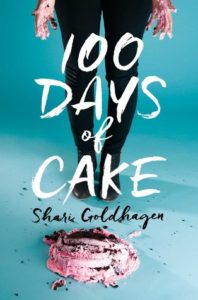 100 Days of Cake by Shari Goldhagen
100 Days of Cake by Shari Goldhagen
There are only three things that can get seventeen-year-old Molly Byrne out of bed these days: her job at FishTopia, the promise of endless episodes of Golden Girls, and some delicious lo mien. You see, for the past two years, Molly’s been struggling with something more than your usual teenage angst. Her shrink, Dr. Brooks isn’t helping much, and neither is her mom who is convinced that baking the perfect cake will cure Molly of her depression—as if cake can magically make her rejoin the swim team, get along with her promiscuous sister, or care about the SATs.
Um, no. Never going to happen.
But Molly plays along, stomaching her mother’s failed culinary experiments, because, whatever—as long as it makes someone happy, right? Besides, as far as Molly’s concerned, hanging out with Alex at the rundown exotic fish store makes life tolerable enough. Even if he does ask her out every…single…day. But—sarcastic drum roll, please—nothing can stay the same forever. When Molly finds out FishTopia is turning into a bleak country diner, her whole life seems to fall apart at once. Soon she has to figure out what—if anything—is worth fighting for.
 The Art of Starving by Sam J. Miller (July 11)
The Art of Starving by Sam J. Miller (July 11)
Matt hasn’t eaten in days.
His stomach stabs and twists inside, pleading for a meal. But Matt won’t give in. The hunger clears his mind, keeps him sharp—and he needs to be as sharp as possible if he’s going to find out just how Tariq and his band of high school bullies drove his sister, Maya, away.
Matt’s hardworking mom keeps the kitchen crammed with food, but Matt can resist the siren call of casseroles and cookies because he has discovered something: the less he eats the more he seems to have . . . powers. The ability to see things he shouldn’t be able to see. The knack of tuning in to thoughts right out of people’s heads. Maybe even the authority to bend time and space.
So what is lunch, really, compared to the secrets of the universe?
Matt decides to infiltrate Tariq’s life, then use his powers to uncover what happened to Maya. All he needs to do is keep the hunger and longing at bay. No problem. But Matt doesn’t realize there are many kinds of hunger… and he isn’t in control of all of them.
 Bad Romance by Heather Demetrios (July 13)
Bad Romance by Heather Demetrios (July 13)
Grace wants out. Out of her house, where her stepfather wields fear like a weapon and her mother makes her scrub imaginary dirt off the floors. Out of her California town, too small to contain her big city dreams. Out of her life, and into the role of Parisian artist, New York director—anything but scared and alone.
Enter Gavin: charming, talented, adored. Controlling. Dangerous. When Grace and Gavin fall in love, Grace is sure it’s too good to be true. She has no idea their relationship will become a prison she’s unable to escape.
Deeply affecting and unflinchingly honest, this is a story about spiraling into darkness—and emerging into the light again.
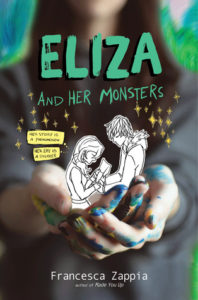 Eliza and her Monsters by Francesca Zappia
Eliza and her Monsters by Francesca Zappia
Eighteen-year-old Eliza Mirk is the anonymous creator of Monstrous Sea, a wildly popular webcomic, but when a new boy at school tempts her to live a life offline, everything she’s worked for begins to crumble.
In the real world, Eliza Mirk is shy, weird, smart, and friendless. Online, Eliza is LadyConstellation, the anonymous creator of a popular webcomic called Monstrous Sea. With millions of followers and fans throughout the world, Eliza’s persona is popular. Eliza can’t imagine enjoying the real world as much as she loves her digital community. Then Wallace Warland transfers to her school, and Eliza begins to wonder if a life offline might be worthwhile. But when Eliza’s secret is accidentally shared with the world, everything she’s built—her story, her relationship with Wallace, and even her sanity—begins to fall apart. With pages from Eliza’s webcomic, as well as screenshots from Eliza’s online forums, this uniquely formatted book will appeal to fans of Noelle Stevenson’s Nimona and Rainbow Rowell’s Fangirl.
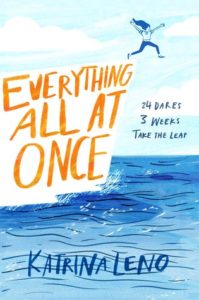 Everything All At Once by Katrina Leno (June 6)
Everything All At Once by Katrina Leno (June 6)
Lottie Reeves has always struggled with anxiety, and when her beloved Aunt Helen dies, Lottie begins to fear that her own unexpected death might be waiting around every corner.
Aunt Helen wasn’t a typical aunt. She was the author of the best–selling Alvin Hatter series, about siblings who discover the elixir of immortality. Her writing inspired a generation of readers.
In her will, she leaves one last writing project—just for Lottie. It’s a series of letters, each containing mysterious instructions designed to push Lottie out of her comfort zone. Soon, Lottie’s trying some writing of her own, leaping off cliffs, and even falling for a boy she’s only just met. Then the letters reveal an extraordinary secret about the inspiration for the Alvin Hatter series. Lottie finds herself faced with an impossible choice, one that will force her to confront her greatest fear once and for all.
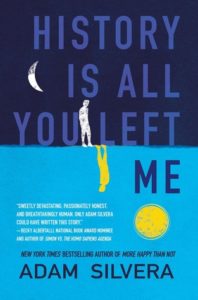 History Is All You Left Me by Adam Silvera
History Is All You Left Me by Adam Silvera
When Griffin’s first love and ex-boyfriend, Theo, dies in a drowning accident, his universe implodes. Even though Theo had moved to California for college and started seeing Jackson, Griffin never doubted Theo would come back to him when the time was right. But now, the future he’s been imagining for himself has gone far off course.
To make things worse, the only person who truly understands his heartache is Jackson. But no matter how much they open up to each other, Griffin’s downward spiral continues. He’s losing himself in his obsessive compulsions and destructive choices, and the secrets he’s been keeping are tearing him apart.
If Griffin is ever to rebuild his future, he must first confront his history, every last heartbreaking piece in the puzzle of his life.
 Little & Lion by Brandy Colbert (August 8)
Little & Lion by Brandy Colbert (August 8)
When Suzette comes home to Los Angeles from her boarding school in New England, she isn’t sure if she’ll ever want to go back. L.A. is where her friends and family are (along with her crush, Emil). And her stepbrother, Lionel, who has been diagnosed with bipolar disorder, needs her emotional support.
But as she settles into her old life, Suzette finds herself falling for someone new…the same girl her brother is in love with. When Lionel’s disorder spirals out of control, Suzette is forced to confront her past mistakes and find a way to help her brother before he hurts himself–or worse.
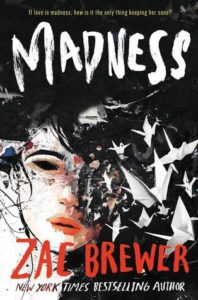 Madness by Zac Brewer (September 18)
Madness by Zac Brewer (September 18)
Brooke Danvers is pretending to be fine. She’s gotten so good at pretending that they’re letting her leave inpatient therapy. Now she just has to fake it long enough for her parents and teachers to let their guard down. This time, when she’s ready to end her life, there won’t be anyone around to stop her.
Then Brooke meets Derek. Derek is the only person who really gets what Brooke is going through, because he’s going through it too. As they start spending more time together, Brooke suddenly finds herself having something to look forward to every day and maybe even happiness.
But when Derek’s feelings for her intensify, Brooke is forced to accept that the same relationship that is bringing out the best in her might be bringing out the worst in Derek—and that Derek at his worst could be capable of real darkness.
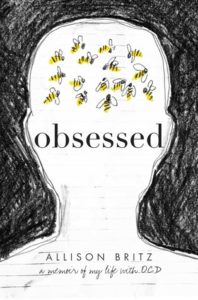 Obsessed: A Memoir of My Life With OCD by Allison Britz (September 18)
Obsessed: A Memoir of My Life With OCD by Allison Britz (September 18)
Until sophomore year of high school, fifteen-year-old Allison Britz lived a comfortable life in an idyllic town. She was a dedicated student with tons of extracurricular activities, friends, and loving parents at home.
But after awakening from a vivid nightmare in which she was diagnosed with brain cancer, she was convinced the dream had been a warning. Allison believed that she must do something to stop the cancer in her dream from becoming a reality.
It started with avoiding sidewalk cracks and quickly grew to counting steps as loudly as possible. Over the following weeks, her brain listed more dangers and fixes. She had to avoid hair dryers, calculators, cell phones, computers, anything green, bananas, oatmeal, and most of her own clothing.
Unable to act “normal,” the once-popular Allison became an outcast. Her parents questioned her behavior, leading to explosive fights. When notebook paper, pencils, and most schoolbooks were declared dangerous to her health, her GPA imploded, along with her plans for the future.
Finally, she allowed herself to ask for help and was diagnosed with obsessive-compulsive disorder. This brave memoir tracks Allison’s descent and ultimately hopeful climb out of the depths.
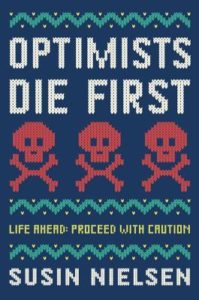 Optimists Die First by Susin Neilsen
Optimists Die First by Susin Neilsen
Life ahead: Proceed with caution.
Sixteen-year-old Petula De Wilde is anything but wild. A family tragedy has made her shut herself off from the world. Once a crafting fiend with a happy life, Petula now sees danger in everything, from airplanes to ground beef.
The worst part of her week is her comically lame mandatory art therapy class. She has nothing in common with this small band of teenage misfits, except that they all carry their own burden of guilt.
When Jacob joins their ranks, he seems so normal and confident. Petula wants nothing to do with him, or his prosthetic arm. But when they’re forced to collaborate on a unique school project, she slowly opens up, and he inspires her to face her fears.
Until a hidden truth threatens to derail everything.
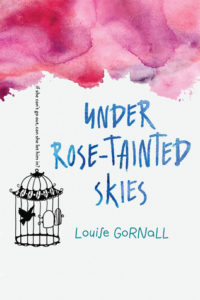 Under Rose-Tainted Skies by Louise Gornall
Under Rose-Tainted Skies by Louise Gornall
At seventeen, Norah has accepted that the four walls of her house delineate her life. She knows that fearing everything from inland tsunamis to odd numbers is irrational, but her mind insists the world outside is too big, too dangerous. So she stays safe inside, watching others’ lives through her windows and social media feed.
But when Luke arrives on her doorstep, he doesn’t see a girl defined by medical terms and mental health. Instead, he sees a girl who is funny, smart, and brave. And Norah likes what he sees.
Their friendship turns deeper, but Norah knows Luke deserves a normal girl. One who can walk beneath the open sky. One who is unafraid of kissing. One who isn’t so screwed up. Can she let him go for his own good—or can Norah learn to see herself through Luke’s eyes?
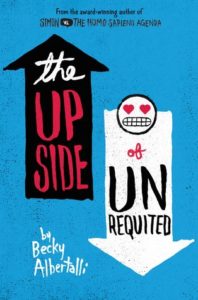 The Upside of Unrequited by Becky Albertalli
The Upside of Unrequited by Becky Albertalli
Seventeen-year-old Molly Peskin-Suso knows all about unrequited love—she’s lived through it twenty-six times. She crushes hard and crushes often, but always in secret. Because no matter how many times her twin sister, Cassie, tells her to woman up, Molly can’t stomach the idea of rejection. So she’s careful. Fat girls always have to be careful.
Then a cute new girl enters Cassie’s orbit, and for the first time ever, Molly’s cynical twin is a lovesick mess. Meanwhile, Molly’s totally not dying of loneliness—except for the part where she is. Luckily, Cassie’s new girlfriend comes with a cute hipster-boy sidekick. Will is funny and flirtatious and just might be perfect crush material. Maybe more than crush material. And if Molly can win him over, she’ll get her first kiss and she’ll get her twin back.
There’s only one problem: Molly’s coworker Reid. He’s an awkward Tolkien superfan with a season pass to the Ren Faire, and there’s absolutely no way Molly could fall for him. Right?
 What I Lost by Alexandra Ballard
What I Lost by Alexandra Ballard
What sixteen-year-old Elizabeth has lost so far: forty pounds, four jean sizes, a boyfriend, and her peace of mind. As a result, she’s finally a size zero. She’s also the newest resident at Wallingfield, a treatment center for girls like her—girls with eating disorders. Elizabeth is determined to endure the program so she can go back home, where she plans to start restricting her food intake again.She’s pretty sure her mom, who has her own size-zero obsession, needs treatment as much as she does. Maybe even more. Then Elizabeth begins receiving mysterious packages. Are they from her ex-boyfriend, a secret admirer, or someone playing a cruel trick?
Thanks for hanging out, YA friends. Until next week.
– Kelly Jensen, @veronikellymars
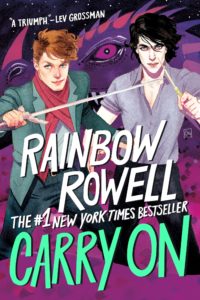
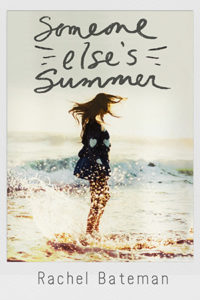
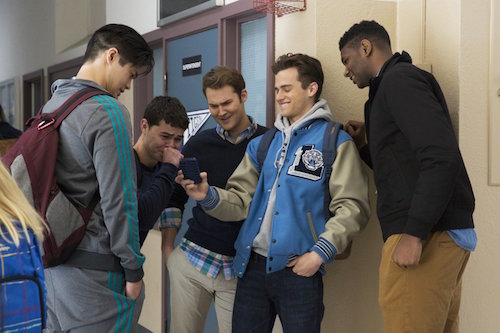
 neck tattoos
neck tattoos
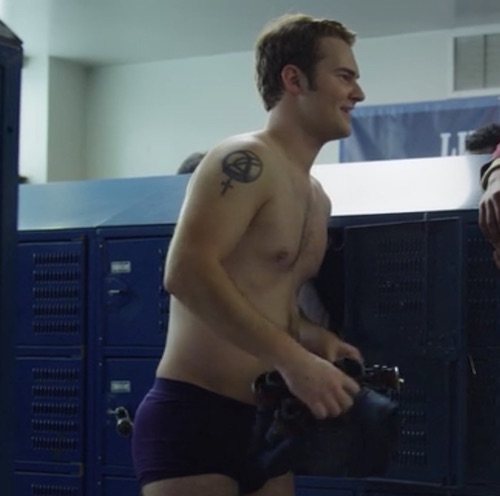
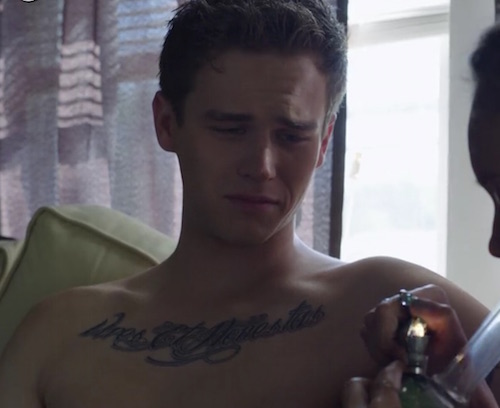
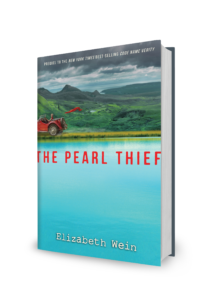 Before Verity . . . there was Julie.
Before Verity . . . there was Julie.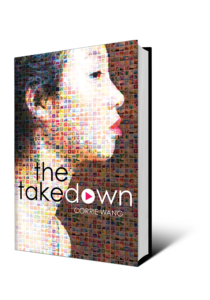
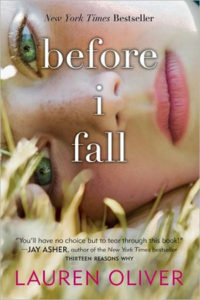

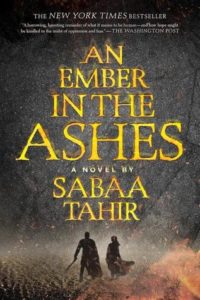

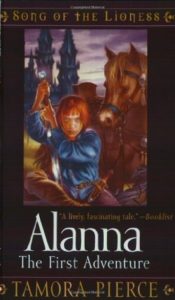
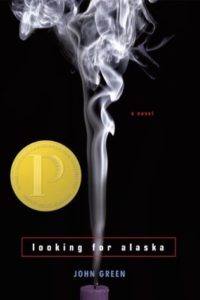
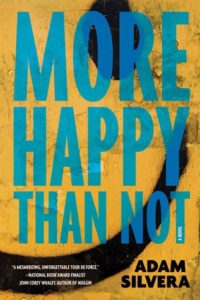
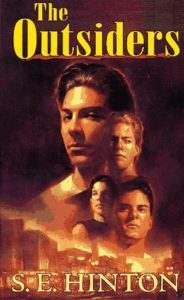
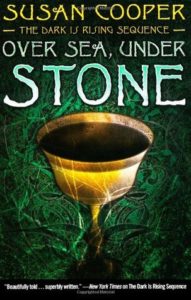

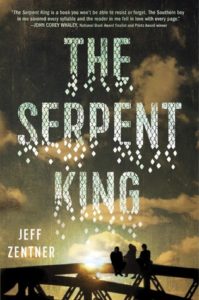


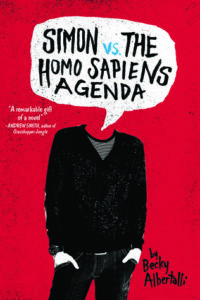


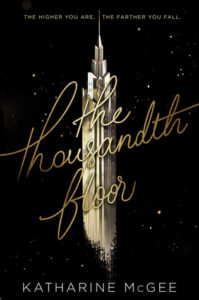
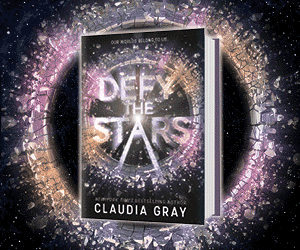
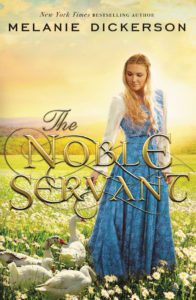
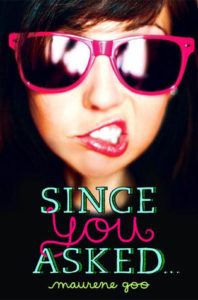
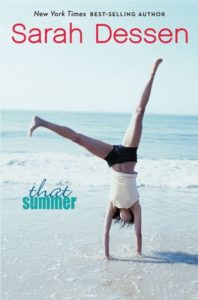
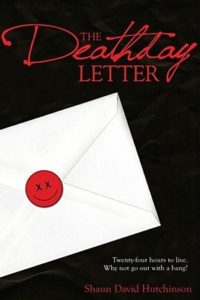
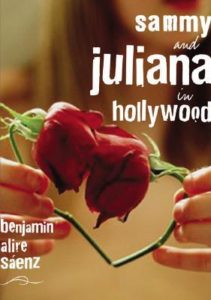
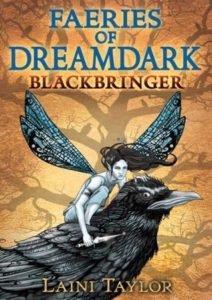
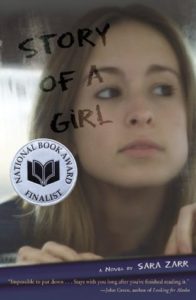
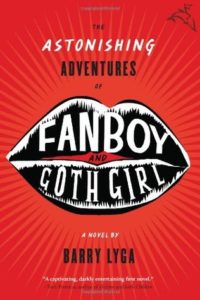
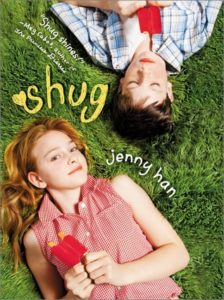
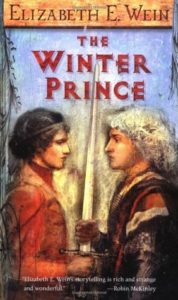
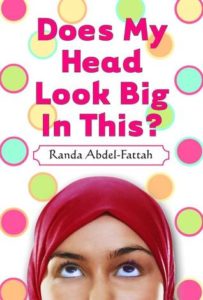
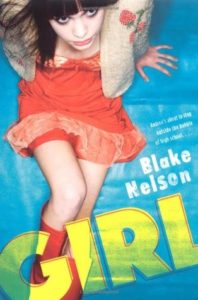

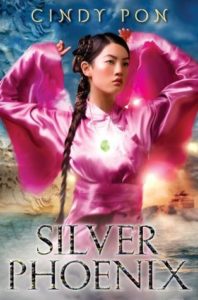
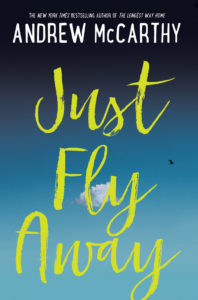
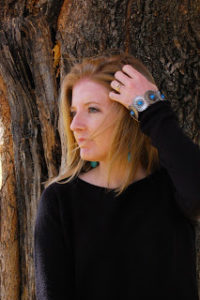 After studying Spanish and history at a small liberal arts school, Kate Hart taught young people their ABCs, wrote grants for grownups with disabilities, and now builds treehouses for people of all ages. Her debut YA novel, AFTER THE FALL, was published January 2017 by Farrar, Straus & Giroux. She also contributes to YA Highway, hosts the Badass Ladies You Should Know series, and sells jewelry, woodworking, and inappropriate embroidery at The Badasserie. A citizen of the Chickasaw Nation, she lives with her family in Northwest Arkansas.
After studying Spanish and history at a small liberal arts school, Kate Hart taught young people their ABCs, wrote grants for grownups with disabilities, and now builds treehouses for people of all ages. Her debut YA novel, AFTER THE FALL, was published January 2017 by Farrar, Straus & Giroux. She also contributes to YA Highway, hosts the Badass Ladies You Should Know series, and sells jewelry, woodworking, and inappropriate embroidery at The Badasserie. A citizen of the Chickasaw Nation, she lives with her family in Northwest Arkansas. 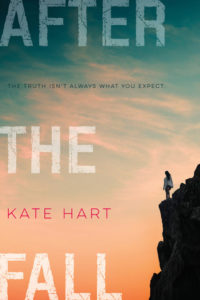 First: give us the pitch for AFTER THE FALL.
First: give us the pitch for AFTER THE FALL.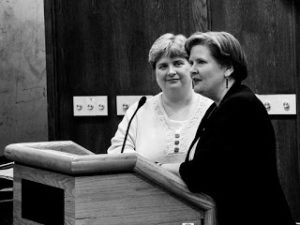 Everyone I’ve profiled has of course been amazing in some way, but the first interview to make me cry was with
Everyone I’ve profiled has of course been amazing in some way, but the first interview to make me cry was with 